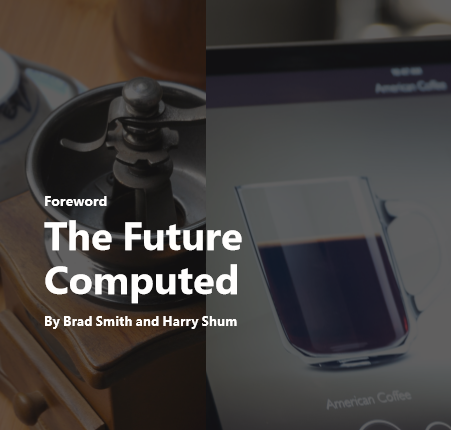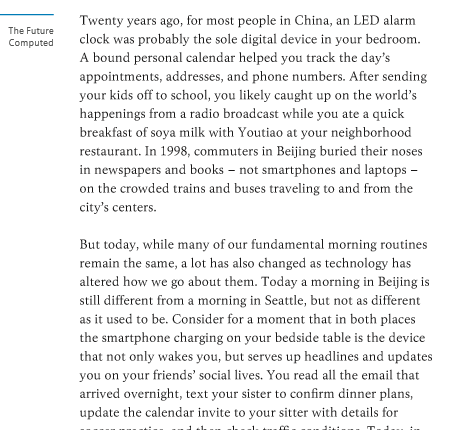Ebook: The future computed – Artificial intelligence and its role in society – Data AI
Twenty years ago, for most people, an LED alarm clock was probably the sole digital device in your bedroom.
Twenty years ago, for most people in China, an LED alarm clock was probably the sole digital device in your bedroom. A bound personal calendar helped you track the day’s appointments, addresses, and phone numbers. After sending your kids off to school, you likely caught up on the world’s happenings from a radio broadcast while you ate a quick breakfast of soya milk with Youtiao at your neighborhood restaurant. In 1998, commuters in Beijing buried their noses in newspapers and books – not smartphones and laptops – on the crowded trains and buses traveling to and from the city’s centers.
But today, while many of our fundamental morning routines remain the same, a lot has also changed as technology has altered how we go about them. Today a morning in Beijing is still different from a morning in Seattle, but not as different as it used to be. Consider for a moment that in both places the smartphone charging on your bedside table is the device that not only wakes you, but serves up headlines and updates you on your friends’ social lives. You read all the email that arrived overnight, text your sister to confirm dinner plans, update the calendar invite to your sitter with details for soccer practice, and then check traffic conditions. Today, in 2018, you can order and pay for a double skinny latte or tea from Starbucks and request a ride-share to drive you to work from that same smartphone.
Compared with the world just 20 years ago, we take a lot of things for granted that used to be the stuff of science fiction. Clearly much can change in just two decades.





